A Harmonious Encounter between
the Performing Arts Scenes of Korea and France
Interviewer: HwaWon Lee (Editor-in-Chief of The Korean Theatre Journal),
ManSu Jo (Professor of Department of French Language and Culture at Chungbuk National University)
Interviewee: Frédéric Mazelly (Artistic Director of La Villette),
Didier Juillard (Director of programming at the Odéon-Théâtre de l'Europe)
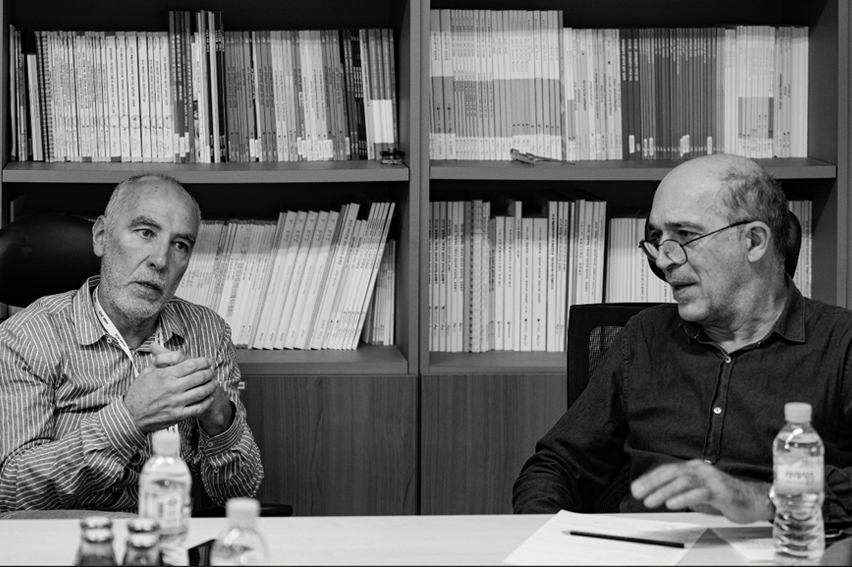
HwaWon Lee: Welcome to Korea. We are delighted to have you both here, and despite your tight schedules, we have arranged this interview. I am HwaWon Lee, the editor-in-chief of the quarterly magazine "The Korean Theatre Journal" of The Korean Association of Theatre Critics.
ManSu Jo: Thank you. I’m pleased to be here. I am ManSu Jo, engaged in theater criticism and dramaturgy. Today, I would like to conduct an interview with Editor-in-Chief HwaWon Lee. First, could both of you introduce yourselves?
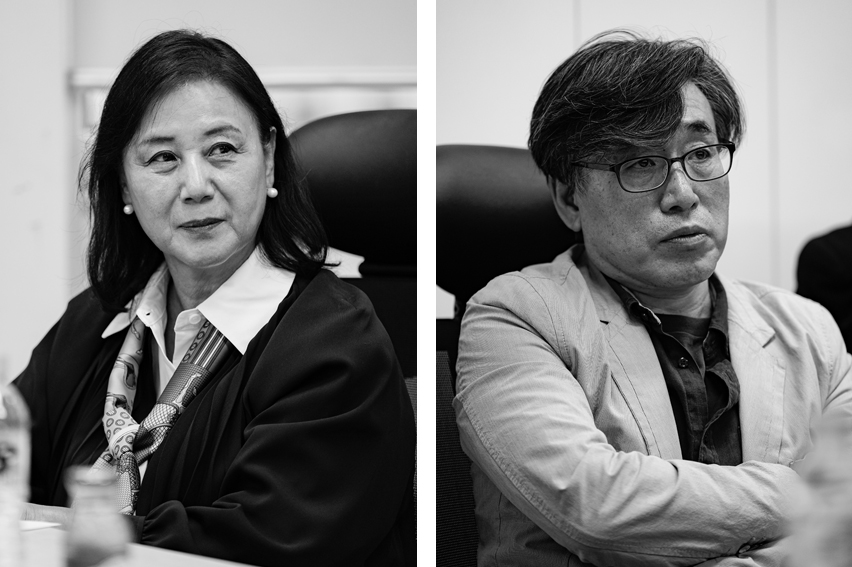
Frédéric Mazelly: I am Frédéric Mazelly, the artistic director of La Villette. La Villette is a national performing arts institution located in the vast La Villette Park in the northeastern part of Paris. I have been to Korea before, not for the Performing Arts Market in Seoul (PAMS), but about ten years ago because of an opera. I used to come to Asia occasionally, but I haven't visited in recent years. Due to COVID-19, I traveled to Europe for work 60 times and, since last year, have been reconnecting with performing arts professionals during overseas trips. Although there is some exchange with Asia, it is still in the early stages compared to Europe. We have already collaborated with many European directors and choreographers.
Didier Juillard: My name is Didier Juillard, and I have been the director of programming at the Odéon-Théâtre de l'Europe (National Theater of Odéon) for the past eight years. I have a history of collaboration with Stéphane Braunschweig, the Artistic Director of Odéon, having previously worked together at the Théâtre national de Strasbourg (National Theater of Strasbourg) and the Théâtre National de Chaillot (Chaillot National Theater) in Paris. Since 2016, I have been working at Odéon, overseeing the distribution of productions created or co-produced at Odéon in France and internationally. Due to the COVID pandemic, international travel has been disrupted over the past 3-4 years. However, before that, I visited Asia in 2018 and 2019, inviting a Chinese production team to Paris and extending an invitation to the Polish director Krystian Lupa. I also planned a tour for Molière's play "L'École des femmes," created by Stéphane Braunschweig, in Hong Kong, Beijing, Shanghai, and Hangzhou—all of which unfortunately had to be canceled. In recent months, exchanges with China have resumed, and this summer, many Asian performing arts professionals visited Avignon. I plan to visit Taiwan again in the spring and maintain communication. To present Asian performances at Odéon or plan French tours, it's crucial to find several consistent venues. This is because inviting a performance once and presenting it only twice is not sustainable for development. Similarly, when showcasing our productions abroad, we aim to visit not just one city but two or three. Initiating contact with Taiwan could lead to connections with Korea, and as we resume contact with China and Hong Kong, we are exploring the possibility of including the works we have produced or co-produced in the 2024 or 2025 programs. Likewise, we seek to discover foreign performances in advance and explore the possibility of European tours in various countries. Currently, we are exploring potential projects with China, Taiwan, and Singapore.
ManSu Jo: The Odéon team has visited Korea once. It was during Olivier Py's tenure as the theater director, and the visit involved performances for children.
Purpose and Experience of the Visit to Korea
HwaWon Lee: Yesterday, along with various events at the Performing Arts Market in Seoul (PAMS), there was also a conference. Could you share the purpose of this visit and what you have seen and felt so far?
Frédéric Mazelly: I arrived yesterday and introduced La Villette at the conference of the Performing Arts Market in Seoul (PAMS). Afterward, I watched two performances. Just now, I watched a traditional performance. In the morning, I mainly had meetings with Korean and Asian performing arts professionals and artists. Many people from Hong Kong, Bangkok, and Malaysia were present, and they were individuals we don't often get to meet in Europe.
ManSu Jo: Does this trip provide an opportunity to discover Korean performances?
Frédéric Mazelly: The performance "Cuckoo," which I will see tonight, is already familiar to me as the team frequently visits Europe.While this particular performance may not be included, I was aware of other productions directed by Jaha Koo that are occasionally showcased in Europe. Given Jaha Koo’s affiliation with the Netherlands, there have been opportunities to see his works at various European festivals. This year, we included the Ambiguous Dance Company, a Korean contemporary dance group, in our program for the first time. Originally scheduled for 2020, it was regrettably canceled due to the pandemic, subsequently postponed to 2023. The performance was successfully concluded in April, garnering favorable responses that led to further touring with our French partners. It was a gratifying experience.
Didier Juillard: A year ago, I met Choi Seok-gyu, the festival director of the Seoul Performing Arts Festival, in Paris, London, and Taipei. He invited me to the Seoul Performing Arts Festival, marking my first visit to Korea. During my stay, I aim to attend numerous performances. This morning, I had a meeting with the LG Arts Center, explored Korean performance venues, and came to see what projects are in place. I look forward to fostering meaningful exchanges in the future.
Introduction to Affiliated Institutions
ManSu Jo: Could you please provide a more detailed introduction to the performing arts institutions you are affiliated with?
Frédéric Mazelly: La Villette covers various fields, not only theater but also dance, music, and multidisciplinary arts.
Didier Juillard: At Odéon, although there are exceptions, text-based theater takes precedence. As the "Theater of Europe," Odéon is a prominent national theater in Europe, starting from Europe and now open to the world. In Paris, there are various national theaters; Colline focuses on contemporary theater, Chaillot, which showcased performances in Korea last week, specializes in dance, and Comédie Française presents professional theater productions. Personally, I am not familiar with Korean theater beyond the works I have seen in Paris. I am scheduled to watch one tonight. Additionally, there has been a piece by Korean choreographer Ahn Eun-me at the Théâtre National de la Colline (La Colline National Theatre).
HwaWon Lee: Can we consider Odéon more open to contemporary theater compared to Comédie Française?
Didier Juillard: The distinctive feature of Comédie-Française is that it is the only theater in France with its own resident troupe. Actors take turns performing at Comédie Française, and external invitations are not extended. Odéon, on the other hand, does not have resident actors. Artists and actors come together for the productions we create or co-produce, and we tour with those productions. A new production is staged every month. Comédie-Française stands as the sole theater with a resident troupe, setting it apart in this aspect from other theaters in France.
ManSu Jo: Odéon is often referred to as the theater of Europe, but does the Théâtre national de Strasbourg also carry the title of a European theater?
Frédéric Mazelly: No, it is simply referred to as the Théâtre national de Strasbourg. However, it is part of a network of European theaters. One distinctive feature of the Théâtre national de Strasbourg is that it has its own national theater school, where not only actors but also set designers, directors, costume designers, and technicians are trained.
ManSu Jo: What are the differences in the missions of the Théâtre national de Strasbourg and the Odéon-Théâtre de l'Europe?
Didier Juillard: We can say that they perform the same mission. Strasbourg has its own theater school, which Odéon does not. The European nature is much stronger at Odéon. In the early 1980s, the then Minister of Culture, Jack Lang, proposed calling Odéon the "Theater of Europe." Back in the 1980s, foreign-language performances were quite rare. Nowadays, it's different. You can see many foreign-language performances at La Villette or the Bastille Theater. One of the distinctive features of Odéon is that we invite foreign directors to work with French actors. This year, we are presenting works by foreign directors such as Krystian Lupa, Ivo Van Hove, Brazilian female director Christiane Jatahy, and Australian director Simon Stone. Simon Stone will also be coming to LG Arts Center here next spring. By inviting foreign directors such as Alexander Zeldin from the UK, we create opportunities for collaboration with French actors, allowing for a cross-pollination of working methods from each country. While we operate in this manner, the Théâtre national de Strasbourg, led by Stanislas Nordey, has almost no exchange with foreign directors. Even if there is, it happens once every two years. It is in line with the policy of the Théâtre national de Strasbourg. However, both theaters hold the same status and receive exclusive support as national theaters from the Ministry of Culture. They do not receive regional support.
Commonalities and Differences between the Two Institutions
HwaWon Lee: Through the websites of the institutions you represent, I learned that this fall, the Greek tragedy "Andromaque" will be performed at both Odéon and La Villette. The work is based on Greek mythology. I'm curious about the commonalities and differences in how it will be realized at these two institutions.
Frédéric Mazelly: At La Villette, Milo Rau is directing the play. He is a Swiss-German director living in Ghent, Belgium, and was the artistic director of the Austrian Vienna Festival. He previously served as the artistic director of the National Theater in Ghent and is a director who recently stepped down.
HwaWon Lee: At Odéon, I understand that it is directed by Stéphane Braunschweig. Can you tell us if there are differences in the working direction and results between these two directors, indicating the distinctions between the two institutions?
Frédéric Mazelly: The play to be staged at La Villette is "Antigone." Instead of directly adapting the original Antigone tragedy, the play takes inspiration from the character of Antigone but sets the story in a new context. It portrays the current threat of deforestation in the Amazon rainforest, depicting the ongoing environmental destruction. The protagonist confronts the government and corporations seizing control of their territory in the Brazilian Amazon, engaging in a struggle. Antigone, in this context, is a village woman fighting against such disasters. It is a piece resembling a documentary based on real research. This is the kind of work Milo Rau is currently known for.
ManSu Jo: Can we consider this genre as theater?
Frédéric Mazelly: It is indeed theater. There is a stage and dialogue. I'm not sure how Stéphane adapted "Andromaque" at Odéon, but in our case, we started with the story of the Amazon tribe, the village, and rewrote the script. Many situations we experienced in real life are reflected in the play. It can be called 'écriture de plateau' (stage writing). Although it is a play, videos shot in the Brazilian Amazon are screened on stage, integrating with the live performance. Some characters appear both on stage and in the video, while others only appear in the video but not on the stage. The performance involves about six actors on stage, the entire village appearing in the video, and police officers in confrontation, resembling a documentary created like a reportage by a real investigative journalist.
ManSu Jo: Can this type of performance be considered a characteristic of La Villette's programming?
Frédéric Mazelly: In 2013, La Villette first presented Milo Rau's work in France. Since then, his performances have been staged not only at La Villette but also at the National Theater of Nantes and other venues. While we can't say that stage direction or documentary-like stage writing is a distinct feature of La Villette, it is a type of performance that has been introduced with interest.
HwaWon Lee: Philippe Decouflé's work is also featured in La Villette's autumn program.
Frédéric Mazelly: Philippe Decouflé represents another style, showcasing the spectrum of La Villette.
HwaWon Lee: Interestingly, Susanne Kennedy, who has attempted a new version of Robert Wilson's "Einstein on the Beach," is presenting works at both La Villette and Odéon this season.
Frédéric Mazelly: Yes, this fall, Susanne Kennedy has collaborated with both La Villette and Odéon, although the works are different.
Didier Juillard: It was a complete coincidence. It happened within the framework of the Paris Autumn Festival (Festival d'automne).
Frédéric Mazelly: In fact, we also proposed a co-production for "Angela," but due to various reasons, it wasn't possible. Inviting both performances posed some challenges. In the end, "Angela" didn't come to fruition.
Didier Juillard: Both works were presented at the Paris Autumn Festival.
Frédéric Mazelly: That's correct.
About the ‘Paris Autumn Festival (Festival d'automne)’
ManSu Jo: I've experienced the Paris Summer Festival, but could you provide more information about the Autumn Festival?
Didier Juillard: The Autumn Festival is older and much larger in scale compared to the Summer Festival.
Frédéric Mazelly: The ‘Paris Summer Festival’ is a small-scale event that takes place during the vacation season, featuring a few companies and performances, mainly outdoors due to the summer season. On the other hand, the ‘Autumn Festival’ showcases 80 to 100 works.
Didier Juillard: It’s held between September and December.
Frédéric Mazelly: The venues are crucial. The festival takes place not only in downtown Paris but also in the suburbs and throughout the Île-de-France region.
Didier Juillard: It's a way of sharing venues, where proposals are received or made. We wanted to highlight Susanne Kennedy within the Autumn Festival. Knowing that La Villette was presenting Susanne's work as part of the ’Autumn Festival,’ we proposed "Angela" to Odéon.
Programming Approaches and Procedures of the Two Institutions
ManSu Jo: You both came to Korea at the invitation of the Korea Arts Management Service(KAMS). I am curious about how French theaters program and what procedures they go through. Could you please explain the programming procedures of the two theaters, when the contact starts, and when it gets finalized?
Frédéric Mazelly: This applies not only to Korea but to other places as well. First and foremost, it’s crucial to see performances. Watching performances is the starting point. After that, things may or may not progress. However, cases where programming is done through meetings without watching the performances are very rare and exceptional.
Didier Juillard: Just having a morning meeting at the ’Performing Arts Market in Seoul (PAMS)’ doesn't make us want to program a particular work. You need to see the actual performance. Watching performances allows us to assess whether programming aligns with our theater's artistic endeavors. While one might personally find a dance performance fantastic, it may not fit into our programming. Performances targeting young audiences, street performances, or musicals might not align with our theater's programming because Odéon-Théâtre de l'Europe focuses on text-based performances. Subsequently, we might encounter compelling and unique stage productions. Afterward, we could plan tours within France or engage in discussions with other partner theaters of Odéon. We have the opportunity to see a performance tonight. During the day, we exchange contacts and explore which performances to attend. Since I don't frequently visit Korea, even if a collaboration doesn't materialize this year, I could come back in a year or two. Therefore, it's essential to remember interesting theater companies and engage in discussions after watching performances. I, too, do not program through meetings or videos but make decisions after seeing the actual performances.
Possibilities for Korean Artists to Enter the French Scene
ManSu Jo: The large national theaters in France may not be easily accessible for young Korean artists. In that case, aside from national theaters or large venues, what networks should young Korean artists contact to enter France? Are there small theaters in Paris that welcome young talented artists?
Frédéric Mazelly: We have both large theaters and performance venues. There are also small performance venues, but they are often used for other purposes. However, in France and Europe, there are many festivals. Speaking specifically about France, through festivals, emerging theater companies from around the world can showcase their works. For example, the "Actoral: Festival international des arts & des écritures contemporaines" currently held in Marseille involves various theater companies and artists from around the world.
Didier Juillard: There is also the Bastille Theater.
Frédéric Mazelly: While small theaters showcase international works, European works predominantly take the lead, partly due to budget constraints.
Didier Juillard: We receive subsidies from the city and the state, but the support is not substantial. The ’Autumn Festival’ collaborates with large theaters, small theaters, and suburban theaters to present a variety of performances on a large scale. Odéon is a theater with 750 and 500 seats. It is not an ideal space for young or emerging artists because the theater needs to be filled for several days. However, there are festivals in other theaters in Paris or in Rennes, for example. There are theaters at various levels. On the other hand, small theaters have limited budgets, so the cost of performances should not be too high, and they also need support. Theater budgets are related to the size of the theater.
HwaWon Lee: Have you ever come across noteworthy Korean works at recent festivals such as the ’Avignon Festival’?
Frédéric Mazelly: I haven't specifically remembered any outstanding works seen in Avignon so far, but I hope to see more in the future. Due to the COVID situation, Korean works have not been widely introduced in recent years.
ManSu Jo: Since you don't have much time staying in Korea this time, it seems you won't have the time to see as many works as you'd like.
Didier Juillard: I am staying for four days and planning to see at least five to six works, including two tomorrow.
Frédéric Mazelly: The performing arts community is relatively small. We roughly know each other. We meet at events like the ’Performing Arts Market in Seoul (PAMS)’ or gatherings in other countries. We build connections, exchange contacts, and if a theater company or artist has talent, they quickly stand out and become known. I believe there are no outstanding artists who are not well-known. Eventually, they become noticeable, known, and verified. If someone shows their talents somewhere, they will undoubtedly catch people's attention.
Didier Juillard: There are various networks. Since tastes and preferences vary, individuals often collaborate with people they are familiar with. If it's a program by someone unknown, even if the work is excellent, there is caution. On the other hand, if you know the person and have a friendly relationship, you pay more attention to the program. There are various opportunities. In terms of connections or networks, artists also provide advice on direction and choices.
Frédéric Mazelly: To give a somewhat extreme example, I recently received a proposal for a traditional dance performance. It is an offer that would never be suitable for people like us. Regardless of the level and quality of the work, the genre itself does not match. However, in theaters in Paris or other cities, proposals for traditional dance or traditional theater from other countries can be made. The ’Festival de L’Imaginaire,’ which has been held in Paris for quite some time, is open to world traditional cultures. Here, various unique performances, dances, concerts, etc., are proposed. They introduce traditional works every time, and that is the mission of the ’Festival de L’Imaginaire.’ However, such things do not align with La Villette's aesthetic direction or style.
Possibilities in Residency Programs
HwaWon Lee: I heard that La Villette has a residency program for external artists. How does it operate? Are both space and budget support provided?
Frédéric Mazelly: We have quite a lot of small studios. There are six studios available for work, and we select and offer them to about 100 theater companies each year. The fields include theater, dance, hip-hop, puppetry, magic, and more. You need to apply through the formal procedure, and we co-support it with three other programs. Not all of the 100 theater companies are programmed because it's technically impossible. Through the final selection, about 15 theater companies perform each season. We provide both space and financial support. The budget is small, but typically, we support for a period of around two weeks.
HwaWon Lee: It seems like a great opportunity for Korean artists to collaborate with French artists. Is joint production also possible?
Frédéric Mazelly: Artists from other countries can stay with us through the residency program, but it's more like collaboration on joint productions due to financial support. For instance, director Carolina Bianchi from Brazil came for a residency in February and will return for two weeks of work at the end of 2024. It's more akin to joint production. We offer the residency, provide financial support, and then the director forms an artistic team and makes the selections. We don't demand French artists to work with them. Unlike Odéon, La Villette doesn't invite directors or choreographers to collaborate with French actors or dancers. We accept the proposal as is, discuss it with the artists beforehand, and while joint productions are possible, we don't plan tours. There isn't a team responsible for such tasks within the organization. I can personally handle it to save costs; for example, I worked with Korea's Ambiguous Dance Company, created a performance, and toured it in partner theaters in France to save costs. However, we don't delegate the production as Odéon does. If Odéon produces something, they create the entire production, then put it on stage, and continue the tour afterward.
HwaWon Lee: It would be great if there were suitable opportunities for Korean artists to work at La Villette.
Frédéric Mazelly: Yes. However, if the entire theater company were to do a residency abroad, there would be cost issues; it's more expensive. Many people have to travel, and we have to provide accommodation in Paris. It would be better to support the theater company by giving them money and helping them easily find studios in Seoul for rehearsals. That way, unnecessary travel can be avoided. Therefore, this type of collaboration is more suitable for small teams with one or two actors rather than the entire team.
HwaWon Lee: What about Odéon?
Didier Juillard: Odéon does not have a residency program. There are two rehearsal spaces and two studios at Odéon, primarily used for in-house productions or joint productions. The remaining availability is informally provided, often in response to people inquiring about space usage. There are two small studios and one rehearsal space, and they are in use almost every day. There is no system like La Villette. If someone approaches us by email, saying, "We are looking for rehearsal space, can you provide it?" it can be arranged informally. As for productions and joint productions, decisions are made based on specific programs. It's not something that is open to the public; it is determined according to the program in consultation with me and the theater director. The studios are not open to the public, and we do not have a residency program.
Notable Contemporary French Playwrights
ManSu Jo: Among contemporary French playwrights based on text, Bernard-Marie Koltès succeeded in Korea, while Jean-Luc Lagarce received a more reserved response. Are there any French playwrights currently being recognized at Odéon among French writers?
Didier Juillard: In Europe and France, there has been a decreased interest in contemporary theater by theater companies and directors for about a decade. They are more interested in post-drama and stage writing, which is a trend not only in France but also across Europe. Artists combine elements from novels, movie scripts, documentary interviews, etc. The reason contemporary playwrights are not gaining much attention is that directors nowadays rarely want to stage modern works. In France, there aren't many prominent emerging playwrights. The interest in contemporary works has significantly diminished compared to 10, 15, or 20 years ago.
Frédéric Mazelly: Some playwrights adapt novels for the stage as well.
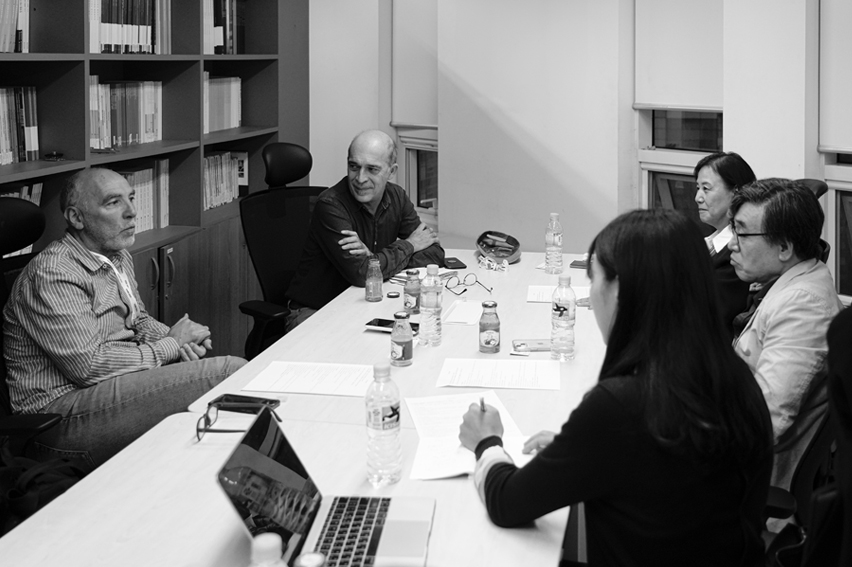
Didier Juillard: That's right. In the past, it was rare, but nowadays, we often create plays by adapting novels or movie scripts, mixing different elements. Odéon has very few contemporary works. About half of our program consists of works directed by Sylvain Creuzevault, such as Edelweiss, set against the backdrop of World War II, or plays like Angela by Susan Kennedy. Christian Rup shows a play called Les Émigrants, an adaptation of Sebald's novel. Additionally, Rebecca Chaillon directs Carte noire nommée désir, and Jours de joie directed by Stephan Brunschweiler is a play written by a Norwegian author, not a French one. So, only a few works by French playwrights are being staged. In my opinion, there is a good chance for the success of playwrights like Joël Pommerat, whose work titled La Réunification des deux Corées has been presented overseas. Despite its title, it's not about Korea; it's a love story with an unfavorable ending. There are also young emerging playwrights like Claudine Galéa and established writers like Florian Zeller. In Odéon's national theater program, we have Christiane Jatahy's adaptation of Hamlet. The original structure is maintained, but the text has changed. There is a trend of cutting and re-creating even classical texts. Antigone is a prime example; it retains the title, but apart from that, it has almost nothing in common with the original. Similarly, Gwenaël Morin's Le Songe cuts and remixes the text, presenting a completely reimagined version in a 1 hour 40-minute runtime.
HwaWon Lee: Is it influenced by Antonin Artaud? In France, it seems like there is a proactive attempt to prioritize stage language and reconstruct texts rather than adhering to the original. In contrast, countries like Ireland, Scotland, or London still focus on works based on the original text.
Didier Juillard: Yes, countries with a stronger tradition of playwrights tend to maintain the original text. In the UK, the text and actors play a significant role, and the emphasis is not predominantly on stage language. On the other hand, in France, there is a tendency to be more interested in direction and stage expression.
The Influence of Korean Popular Culture
ManSu Jo: Recently, Korean popular culture has gained significant recognition in Western societies, with K-pop, movies, and dramas becoming globally popular. Do you think this phenomenon could lead to a similar spread of Korea's pure arts, such as literature, theater, and dance?
Frédéric Mazelly: It seems unlikely that audiences enjoying K-pop concerts would also go to the theater to watch a play. Only a very small minority might do so; it doesn't appear to be a trend that would spread widely.
ManSu Jo: Why would you think that?
Frédéric Mazelly: In large concerts that sell out 6,800 seats at Paris Zenith, the audience passes by the Philharmonie de Paris playing classical or contemporary music on the right and a dance theater on the left. Concertgoers may not even be aware of the existence of such performance spaces, let alone show any interest in what happens inside. They simply attend the concert and that's it.
Didier Juillard: It varies from concert to concert, like Patti Smith's concerts.
Frédéric Mazelly: Patti Smith is an icon of traditional pop. People attending K-pop concerts may not know Patti Smith.
Didier Juillard: That's true. However, nowadays, theater artists are influenced a lot by TV dramas. Theatrical writing appeals more to the younger generation who have watched many dramas. They also listen to music, but it's not necessarily K-pop. There is some correlation, but it depends on how you define popular culture. In France, very young people are into K-pop; it's highly popular among those aged 15 to 20. They might not be theatergoers right now, but who knows in ten years. Young people in high school sometimes go to the theater as a group.
Frédéric Mazelly: The same goes for dramas and movies.
Didier Juillard: If someone has watched a movie like Parasite, they might become theatergoers, although Parasite-like movies are closer to auteur cinema than mainstream cinema. In France, it had success, but it didn't attract millions of viewers like Star Trek. (Laughs) While audience curiosity may lead them to express interest in other cultures, whether it translates into popular culture is uncertain. The term ’populaire’ (popular) is always challenging to use.
Audience Composition and Trends
ManSu Jo: Speaking of Odéon, there's the Odéon Theater in the 6th arrondissement, and the Atelier Berthier, a smaller theater, is in the 17th arrondissement. It's considered that this is an attempt to attract different audiences to the theaters based on social class. Is such a strategy successful? I'm curious whether the majority of the audience at the French National Theater consists of middle-aged or older bourgeois from the upper-middle class, or if there is a diverse audience, including younger individuals from different social classes.
Didier Juillard: Initially, there was no such intention. Atelier Berthier was created to be used during the major renovations of the Odéon theater in 2000, and we decided to keep it afterward because it offers two different types of performance spaces. Odéon is an Italian-style theater with its constraints. It has a relatively narrow stage, and although the theater's height and arrangement are beautiful, it has limitations, making it unsuitable for contemporary or large-scale productions. In contrast, Atelier Berthier is a 450-seat black box theater where we can do anything we want. We often present contemporary text plays or works of theatrical writing there. At the 6th arrondissement Odéon, more famous titles and repertoire works are performed. We occasionally mix the two. For instance, we might stage a work by Marie-Bodo in Atelier Berthier and a contemporary performance like The Confessions at the 6th arrondissement Odéon to avoid audience members saying, "I only go to the 6th," or "I only go to the 17th." Also, tickets for Atelier Berthier are a bit cheaper. However, at Odéon, while good seats can be expensive, those in higher locations are much more affordable. This is due to the Italian-style theater structure. Beyond its location in the 17th arrondissement, Atelier Berthier attracts a younger audience interested in theater and seeking surprises. On the other hand, at the 6th arrondissement, you have tourists, people coming to take pictures because the theater is a historical monument, and visitors from the regions who, for example, spend two days in Paris and come to see what's happening at Odéon or Comédie-Française. Therefore, the 6th arrondissement tends to have relatively fewer theater enthusiasts. About 20-30% of regular Odéon members never go to Atelier Berthier. Another reason is that until a few years ago, getting to Atelier Berthier was not easy by subway. Now, with new subway lines, accessibility has improved. However, in the past, there were no parking spaces, and many considered it too far. Furthermore, apart from the 30% discount for university students, we also offer discounts for those under 30, whether they are students or working. We created this discount system because, especially when people start their professional life, they may not have a regular job, and their salary may not be high, so they think tickets are too expensive. As a result, we have a substantial number of young audience members. Additionally, we have a significant number of audience members aged 45 and above. Like other French theaters, it's challenging to attract audiences aged between 30 and 45 for various reasons, such as different interests, family obligations, or the perception that tickets are too expensive. The age of theatergoers is increasing, but we still have many audience members under 30. Sometimes, school groups come, and there are also individual young people. Similar to La Villette, Odéon Theater's audience is mostly upper-middle-class. Despite efforts to broaden the audience through various educational programs and opening Atelier, the impact is limited. Those who do not have a comfortable income or do not appreciate cultural activities from a young age tend to visit the theater less often than those with high education levels and cultural habits established in their childhood. The problem is that accessibility to culture, including theater, dance, movies, and libraries, unfortunately depends on the environment. Although everyone is making efforts to change this, the results are limited. It's a significant topic of discussion in France, and it's not unique to France; Germany faces similar challenges. It's not just about money; educational levels are also relevant. Education, family cultural habits, and social background are strongly associated with access to cultural activities. I assume Korea might face similar challenges.
HwaWon Lee: In Korea, the audience coming to theaters to watch plays is generally limited.
Frédéric Mazelly: France is relatively stable, and both theaters and festivals generally perform well. 2022 was good, and 2023 has been very good as well. People are seeking out theaters. However, from a social class perspective, it's usually the same class that comes to watch each time. As Juillard mentioned, they have succeeded in getting people up to the age of 30 to come to the theater through discounts, benefits, and various activities. The elderly, having long enjoyed cultural activities, continue to attend performances consistently.
Didier Juillard: Retirees have both time and money.
Frédéric Mazelly: That's right. However, from the ages of 30 to 50, there isn't much interest. La Villette still attracts a diverse audience because they showcase various types of performances. However, these audience groups don't mix. Those who come to watch a play don't go to see dance or circus performances. The audience varies depending on the type of performance.
HwaWon Lee: Do you think the audience coming to the Odéon Theatre also goes to La Villette?
Didier Juillard: I haven't compared, but...
Frédéric Mazelly: There doesn't seem to be a significant difference in the audience.
Didier Juillard: Considering Susanne Kennedy's "Angela," it attracts different audiences than usual because of the presence of visual arts. Also, the works of the Spanish director Angélica Liddell, who came from Spain, brought in audiences like an event. These audiences don't come to see other theater productions. They came to see a different kind of performance. Each show targets a different audience.
Frédéric Mazelly: Overall, there are many audiences with higher education. In September, there was a Lithuanian opera performance on the beach, and the audience went to see exhibitions, theater, and opera. In addition, audiences come to watch theater and dance performances. Their biggest commonality is that they fundamentally enjoy cultural activities.
The Differences Before and After the COVID-19
HwaWon Lee: In the past few years, with the impact of COVID-19 before and after, what differences do you feel in terms of performances and audiences?
Frédéric Mazelly: We don’t seem to have experienced a significant difference.
Didier Juillard: This year, it seems that audiences, not only at Odéon but also at other theaters, are rediscovering performance venues. Last year, audiences preferred well-known and certain performances, and reservations for lesser-known works were made just before the show. However, this season, there is a lot more enthusiasm. The weather in Paris is better than usual these days. Exhibitions, movies, theater, and more are attracting larger audiences this season. People seem more willing to go out and express more curiosity than last year. Last year in France, there were many protests and strikes due to pension reforms, which had an impact. However, this year, people seem more eager to go out and show more curiosity compared to last year. Last year, people preferred well-known performances post-COVID, and for other performances, they tended to book tickets at the last minute. This year, the atmosphere is better than last year.
Frédéric Mazelly: If this continues...
Didier Juillard: (laughs)
Frédéric Mazelly: Well, things are going well. The two exhibitions La Villette held in the summer were also a great success. Tens of thousands of visitors flocked to the exhibition halls, setting records. Concerts held around La Villette, in Philharmonie and Zenith, were all successful. Regardless of social class, all audiences seem to be seeking more live performances, shows enjoyed together with people, and watching less Netflix. As a result, Netflix revenue plummeted. This means that people are watching less Netflix and going out more compared to two or last year, which is positive for professionals in the performing arts like us.
HwaWon Lee: In Korea, audiences are returning to theaters, but there seems to be a recent difference, possibly due to various social and cultural factors, both before and after the COVID-19.
Didier Juillard: We thought we had lost it, but looking at the situation this year, it seems we have regained it.
Exchange through Art Markets
ManSu Jo: You mentioned coming to Korea for the Performing Arts Market in Seoul (PAMS). Are there similar performing arts markets in France? If Korean producers want to purchase or explore French works, are there markets or festivals, aside from the mentioned festival, that they must visit?
Frédéric Mazelly: It seems there are two philosophies, one for Europe and another for non-Europe, which includes Anglo-Saxon and Asian regions. The way of thinking seems to differ based on where you belong. In the Anglo-Saxon system, there are markets like those in Australia, Quebec, or New York.
Didier Juillard: In Europe, we meet through festivals rather than as traders through markets.
Frédéric Mazelly: That's right, the concept of individual booths at markets doesn't exist.
Didier Juillard: Personally, I don't prefer art markets. I never feel the desire to see only part of a performance and then want to include it in the program. At markets, people exchange business cards after meeting, but I prefer festivals. During my visit to Taipei, performances were showcased for a duration of 20 minutes each, prompting my request for a comprehensive presentation of the entire production. Brief exposures seldom offer substantial insights. Conversely, at a festival, one can fully experience performances, engage with professionals subsequently, and participate in meaningful meetings and discussions. However, with speed dating or short video viewings at markets, you can't be sure. At the ’Avignon Festival,’ we watch the entire performance, understand what it is, and then talk to the professionals if needed. Even this morning, we had a brief meeting where each person presented for 15 minutes via video. While I personally wasn't convinced, the advantage is that you can still meet people.
Frédéric Mazelly: The gathering of professionals and practitioners at markets is of particular interest, providing insight into their roles, methodologies, and facilitating reciprocal learning opportunities. Comparable platforms exist in other regions such as Australia and Japan, attracting professionals to engage in dialogue with practitioners from adjacent areas. In the context of 'Performing Arts Market in Seoul (PAMS).‘ it serves as a conduit for novel exchanges, encompassing regions like Asia, Bangkok, and previously unexplored locales. This dimension adds a layer of fascination to the overall experience.
HwaWon Lee: Despite the constraints of time, our discussion covered informative aspects, including the current status of two preeminent institutions symbolizing the performing arts culture in France and Europe, the unfolding dynamics of international exchanges, and insights into the overseas endeavors of Korean artists. Your willingness to engage in this interview amidst a demanding schedule is deeply appreciated. Wishing you fruitful experiences and accomplishments in the remaining itinerary. Furthermore, I anticipate the sustained presence of exemplary French performances in our country and the prospect of concealed treasures within Korean performances resonating with diverse audiences in France.
* This article was jointly published on the quarterly theater criticism magazine, “The Korean Theatre Journal” no.111 (Winter 2023) and the performance information platform TheApro by the Korea Arts Management Service.
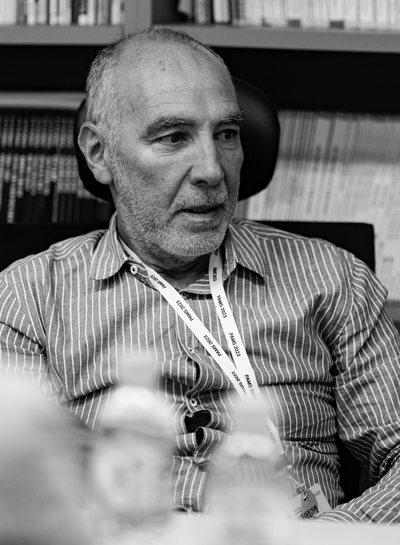 |
Frédéric Mazelly A Project Manager, Artistic Director, and Curator, Frédéric Mazelly has executed a multitude of diverse performing arts projects. His extensive portfolio includes directorial roles in various projects, notably at La Villette, Villette Sonique Festival, Villette Numérique Festival, and the Château Theater. |
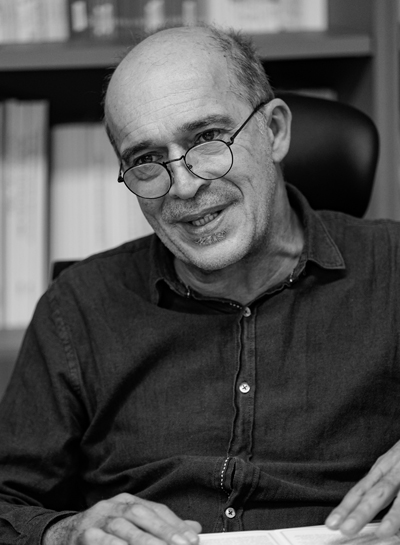 |
Didier Juillard Serving as the Director of Programming at the Odéon-Théâtre de l'Europe in Paris, Didier Juillard has previously held the position of General Manager (responsible for communication, promotion, and programming) at the Théâtre National de la Colline and the General Manager at the Théâtre national de Strasbourg (National Theater of Strasbourg). |
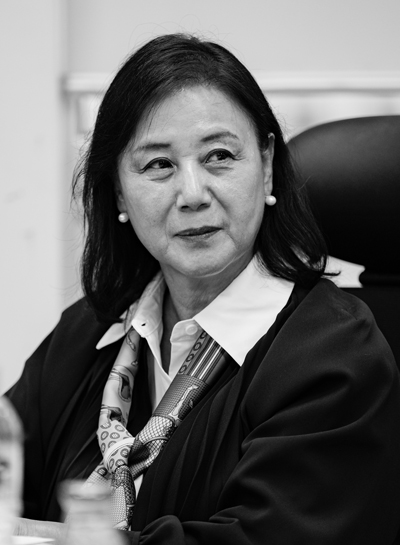 |
Hwa Won Lee An Honorary Professor at Sangmyung University and the Representative of the Borderless Arts Center, Hwa Won Lee is the author of "A New Reading of Racine's Tragedy" and "Reading the World through Theater." She is also the translator of "Molière's Plays Collection." Working and living with a focus on theater as the synthesis of various arts, she considers the radiant 'moments' experienced in the audience or on the stage as the most significant reward. |
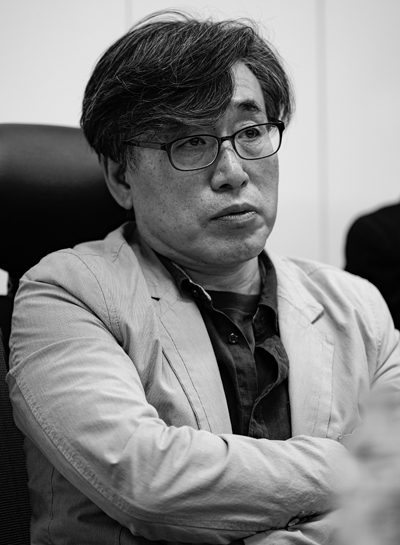 |
ManSu Jo A Professor in the Department of French Language and Culture at Chungbuk National University, Man Su Jo is the author of "Books on Stage" and has written articles on drama and participated in creating plays as a dramaturge. His involvement includes more than 50 works such as "Dying in Seogyo-dong," "Venetian Merchants of Changgeuk," "Oslo," "Sunlight Shower," and "Dante's New Song." |








 PREV
PREV
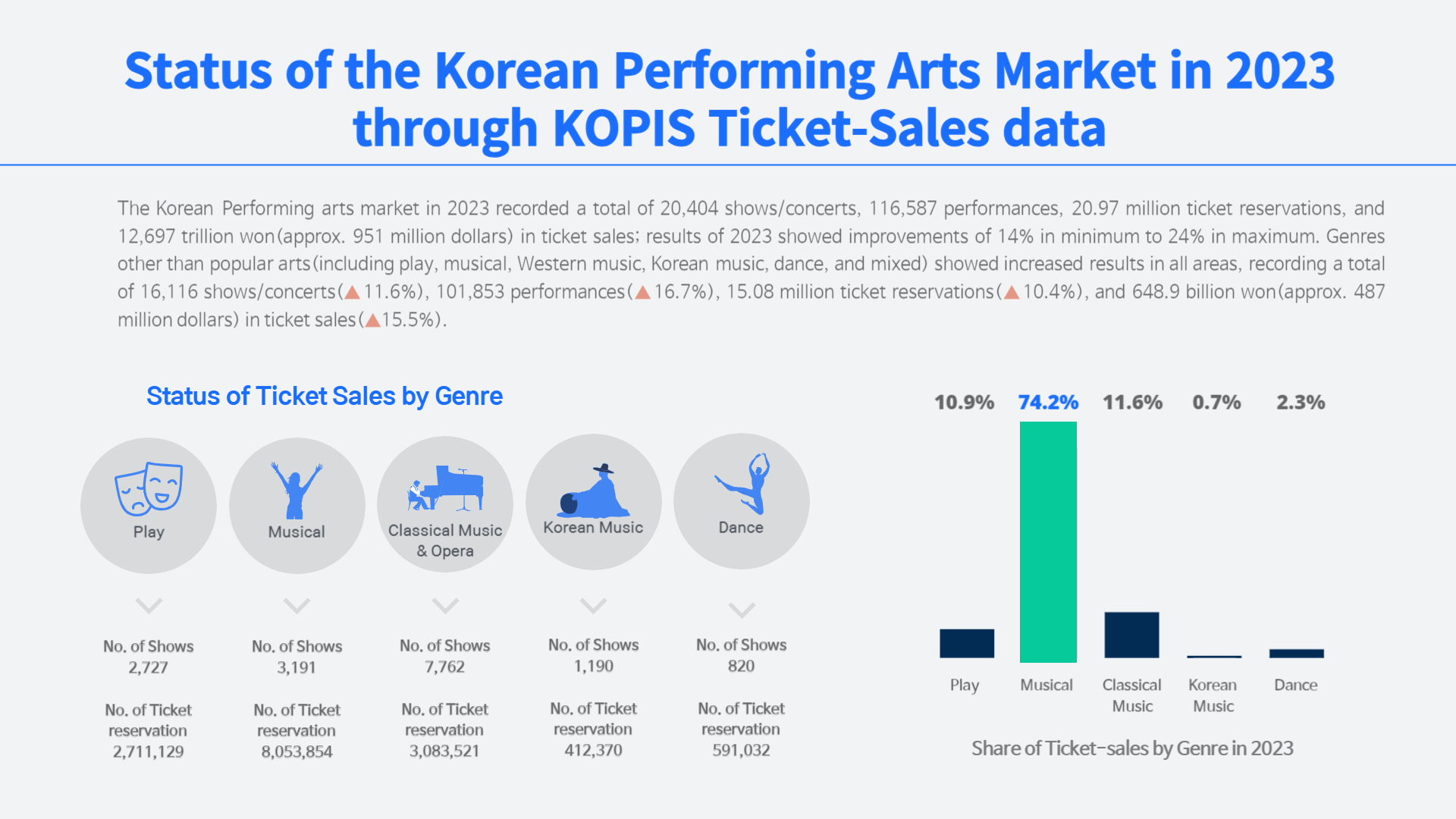
.jpg)
.jpg)
.jpg)
.jpg)











